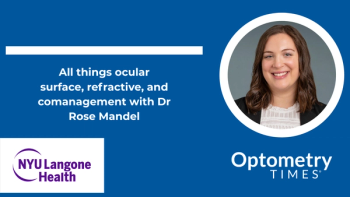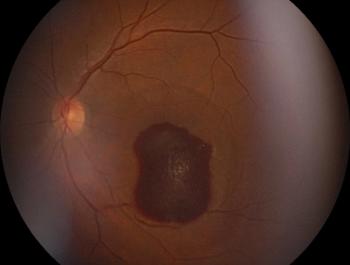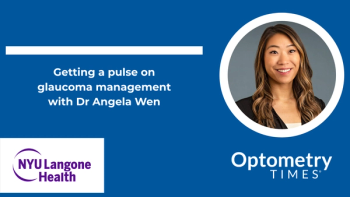
New federal bill targets vision and dental care plans
Congressman Earl “Buddy” Carter (R-GA) recently introduced a new bill titled “Dental and Optometric Care Access Act (DOC Access Act)” that would address conflicts between dentists and eyecare providers and insurance providers.
Washington, DC-Congressman Earl “Buddy” Carter (R-GA) recently introduced a new bill titled
There are a number of similar bills at the state level that address doctor grievances, such as the limiting of laboratory choice, forcing discounts on noncovered services, and forcing doctors to participate in a vision plan as a condition for participating in a medical plan. The DOC Access Act would remedy some of these conflicts.
Related:
“This bill is a counterattack to policies that have been threatening optometric practices across the country as well as the patients they serve,” says William T. Reynolds, OD, American Optometric Association (AOA) trustee. “These are all unfair provisions that the insurance industry has put in. They’ve already been attacked on the state level, and now the AOA is attacking them on a federal level.”
Details of the bill
HR 3323 aims to improve coverage under dental and vision plans by outlining the following provisions:
• In general: “The plan or coverage shall provide, with respect to a doctor of optometry, doctor of dental surgery, or doctor of dental medicine that has an agreement to participate in the plan or coverage and that furnishes items or services that are not covered by the plan or coverage to a person enrolled under such plan or coverage, that the doctor may charge the enrollee for such items or services any amount determined by the doctor that is equal to, or less than, the usual and customary amount that the doctor charges individuals who are not so enrolled for such items or services.”
• Regarding covered items and services: “An item or service shall be considered, with respect to a plan or coverage, to be covered by the plan or coverage only if the negotiated rate agreed to by such plan or coverage and the doctor for such item or service, without regard to any cost sharing obligation of the enrollee, is an amount that is reasonable and is not nominal or de minimis.”
• Regarding changes to the plan: “The terms of an agreement between such a plan or coverage and such a doctor (including, in the case of a plan or coverage that provides for a provider network, the negotiated rate for providers that participate in the network of such plan or coverage), may be changed only pursuant to a subsequent agreement signed by the doctor that documents the acknowledgment and acceptance of the doctor (as applicable) to such changes.”
• Regarding the duration of limited-scope plans: “In the case of an agreement between such a doctor and such a plan or coverage that offers limited scope dental or vision benefits, the agreement may not be for a period that is greater than two years.”
• Regarding ancillary services and procedures: “Such plan or coverage may not deny such a doctor participation in the plan or coverage or remove such a doctor from participation in the plan or coverage for the sole reason of the failure of the doctor to accept the terms and conditions under such agreement for any ancillary service or procedure.”
• Regarding the conditions to join a provider network: “The plan or coverage may not require that such a doctor must participate with, or be credentialed by, any specific plan or coverage offering limited scope dental or vision benefits as a condition to participate in the provider network of such plan or coverage.”
• Regarding interference with existing relationships and requirements: “Unless otherwise required by law or regulation, such plan or coverage may not directly communicate with an individual enrolled in such plan or coverage in a manner that interferes with or contravenes any State or Federal requirement, or doctor-patient relationship in existence at the time of such communication.”
• Regarding laboratory choice: “The plan or coverage may not, directly or indirectly, restrict or limit, such a doctor’s choice of laboratories or choice of source and suppliers of services or materials provided by the doctor to an individual who is enrolled under the plan or coverage.”
AOA and the DOC Access Act
The AOA says the
According to the AOA,
“Congressman Carter has been a great friend of optometry since his days in the Georgia State House and Senate,"
Related:
Dr. Reynolds says size matters when it comes to supporting this bill in Washington.
“The biggest thing that optometrists can do to help support this bill is to join the AOA,” he says. “And we need members to be active in relation to the PAC and at a grassroots level. We’re going against a formidable opponent-the insurance industry.”
Optometry needs to rally behind the AOA and this bill, says Craig Steinberg, OD, JD, in a post on online forum ODWire.
“This is a very pro-consumer/pro-patient bill. Allowing us to use our own labs, or labs of our choice, will lower costs and improve both quality and service (time). It is a consumer bill to eliminate unfair business practices that increased VCP profits and hurt our patients. We need to get consumer groups to support it. It is what the American Association of Doctors of Optometry (AADO) and Union of American Eye Care Providers (UAECP) have been fighting for.” Steinberg is founder and executive director of AADO and UAECP.
According to Tommy Lucas, OD, president of the Texas Optometric Association, the AOA has worked to bring this bill to Congress after seeing the results of similar language passed at the state level.
“The AOA collaborated with American Dental Association (ADA) to have the language applicable to vision plans and dental plans,” he says in a post on ODWire. “The bill language closely resembles the ‘model’ language created by the AOA State Government Relations Center a few years ago when working with state affiliates to pass state legislation. The dentists passed a non-covered service law in a majority of states, but the optometrists on the state level have expanded that base concept to create a more robust law designed to promote fairness by vision plans toward doctors and patients.”
Dentists react to the new bill
The AOA partnered with the ADA in working toward the DOC Access Bill. Dr. Reynolds says this partnership made sense because both professions are facing very similar challenges with insurance companies. Putting their combined memberships behind the bill will make it easier for the AOA and ADA to find support in Washington.
Maxine Feinberg, DDS, ADA president,
“I speak on behalf of the ADA’s 158,000 members in thanking Rep. Carter for introducing this legislation, which would prohibit dental insurance companies from interfering in the doctor-patient relationship by dictating prices for services they don’t even cover,” says Dr. Feinberg. “State after state have passed similar laws, but federal action is necessary in order to apply the prohibition to all health care coverage products.”
Related:
Sheri B. Doniger, DDS, Editorial Advisory Board member of sister publication
“Previously, those dentists have not received any payment at all for any items that were not covered under the old agreement that’s currently in place with the place with the patient and the benefit company,” she says, speaking exclusively with Optometry Times. “But if this bill goes through, this is allowing the dentist to charge her normal fee to the patient for a procedure that is not listed under the bevy of procedures that are available to the patient through his existing plan. I think it’s a good thing. I am not involved in any restrictive plans, but I don’t get paid if I do things out of the scope.”
John C. Comisi, DDS, MAGD, Editorial Advisory Board member of Dental Products Report, is cautious in his interpretation of the bill.
“Well, as usual, these bills are often difficult to fully fathom on first glance,” he says. “It sounds like it proposes to allow dentists and eyecare doctors the ability to charge for the patient for provide care even that is not formally covered under the plan.”
When reading the section that addresses covered items and services, Dr. Comisi says he’s not sure it would affect him as a non-participating (non-par) doctor.
“Since I am a non-par doc, never have been enrolled with any company, this will not really affect me, but for those par docs who have been ‘handcuffed’ by the contracts and were not able to provide services, even if the patient wants it, due to the contract agreement, this might be good,” he says. “But again, the devil is in the details and the interpretation of this.”
Newsletter
Want more insights like this? Subscribe to Optometry Times and get clinical pearls and practice tips delivered straight to your inbox.



















































.png)


